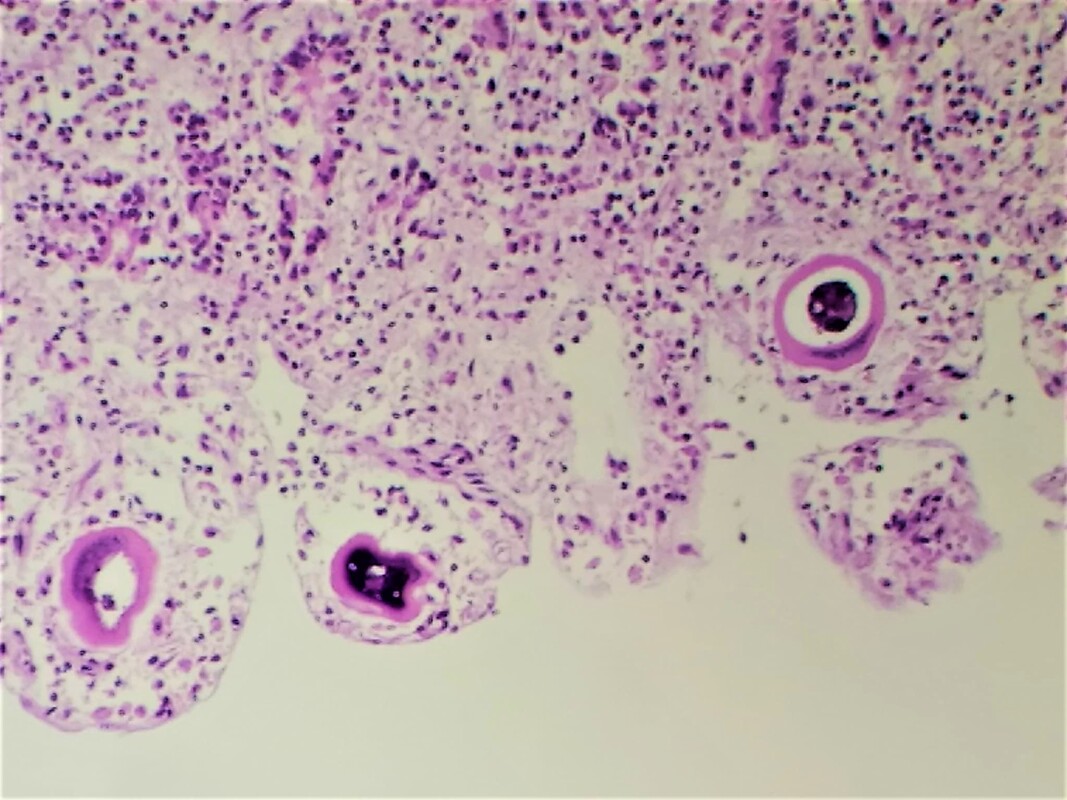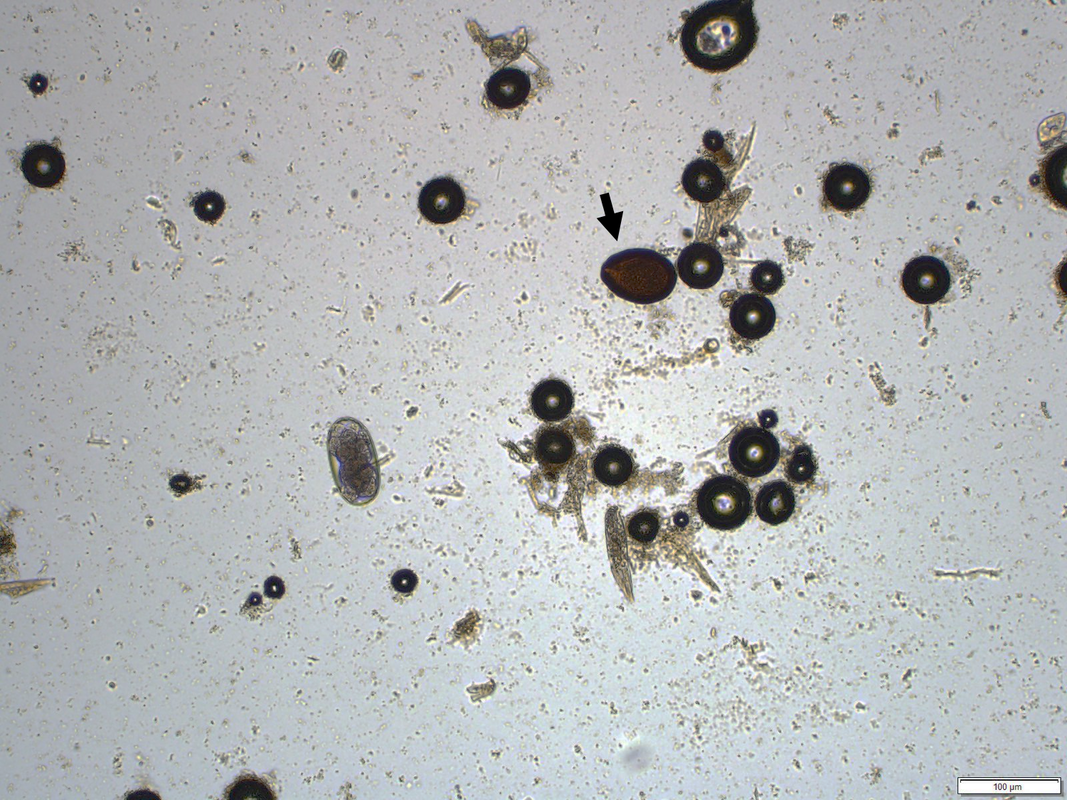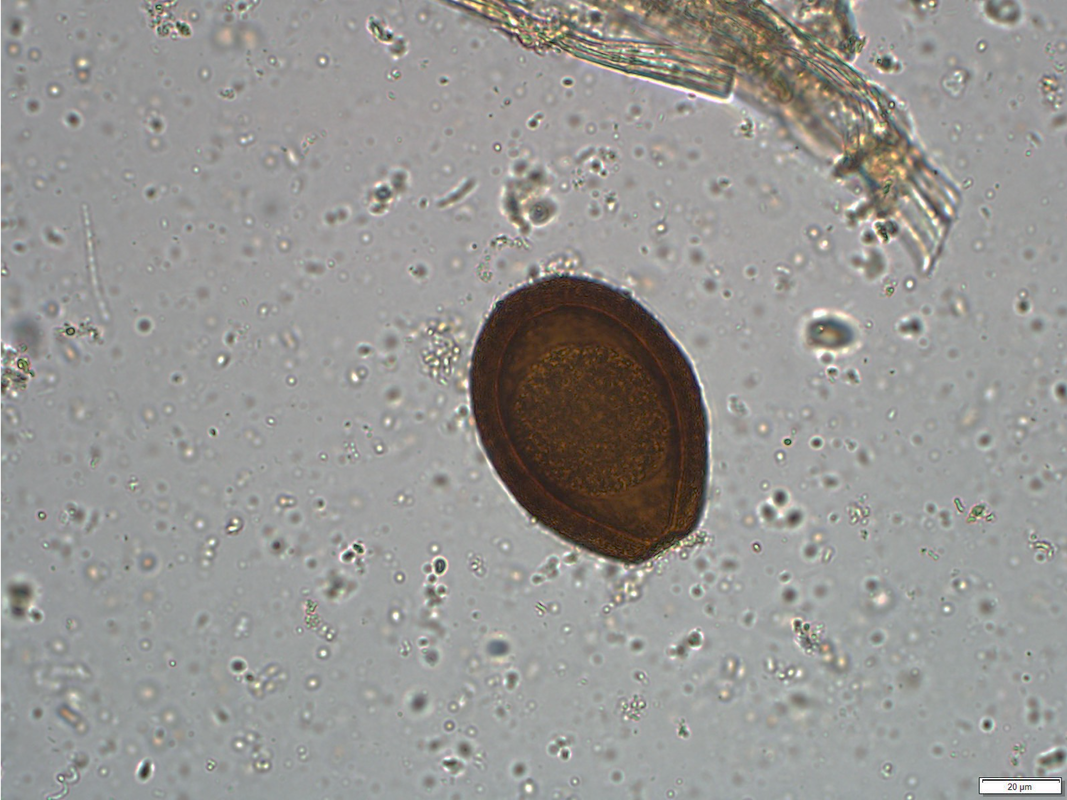|
How pathogenic is this parasite? A 4-month-old quarter horse colt was submitted for necropsy. Per submission history, the foal was behaving normally in the pasture the previous morning. Around 3pm, he was down and could not get up. His temperature was >108 °F, and although aggressive supportive care was initiated, the foal was found dead in his stall around 5pm. No significant gross abnormalities were observed during the necropsy examination. The GI tract contents were watery and muddy, indicating diarrhea. A fecal sample was submitted for a diarrhea panel to determine if there were any viral, bacterial, or parasitic infections. A centrifugal fecal flotation with Sheather’s sugar solution (specific gravity, 1.26) was performed, and a low number of strongyle type eggs were detected. Histologic examination of the small intestine revealed a low number of intraepithelial protozoan gamonts (Figure 1). Figure 1: Histologic examination of small intestine 200x magnification. The pathologist on the case requested another fecal examination to confirm this protozoan infection. Another centrifugal fecal flotation was performed with saturated sodium nitrate solution (specific gravity, 1.39) and again showed a low number of strongyle eggs and additional protozoan oocysts (arrow) that were not evident on the first fecal flotation (Figures 2 & 3). Figure 2: Centrifugal fecal flotation with saturated NaNO3 solution (specific gravity, 1.39) 100x magnification. Figure 3: 200x magnification. Eimeria leuckarti oocysts Eimeria leuckarti is an intestinal coccidian parasite common in horses and donkeys. Oocysts are large and ovoid in shape (~ 80 x 60 microns) with a thick dark shell and distinct micropyle. Diagnosis can be challenging. Due to the heavy/dense oocysts, a sedimentation procedure has been recommended, or flotation with a higher specific gravity solution, as in the present case. Infections appear to have minimal clinical significance in horses; however, it has been incriminated as a cause of intermittent diarrhea. In this case, rotavirus was detected by PCR, which was thought to be the primary cause of severe diarrhea, resulting in sudden death. Special thanks to Dr. Rory Chia-Ching Chien, DVM, MSc, DACVP for sharing the case and a photo of the histologic examination. Comments are closed.
|
Archives
July 2024
Have feedback on the cases or a special case you would like to share? Please email us ([email protected]). We will appropriately credit all submittors for any cases and photos provided.
|



